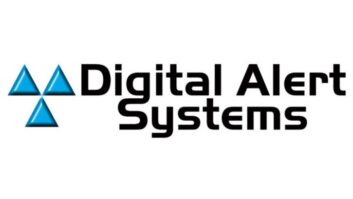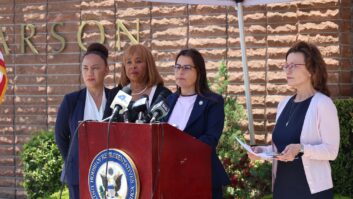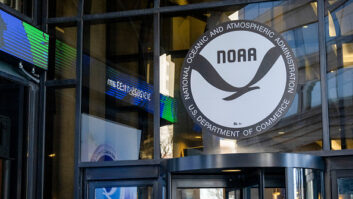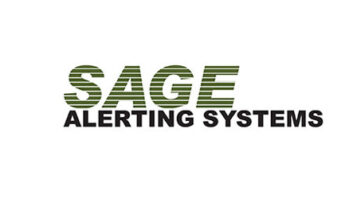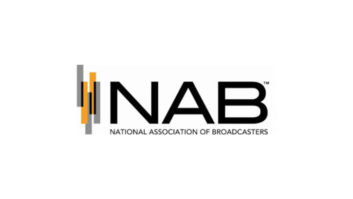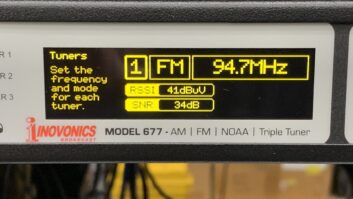Radio World’s Masked Engineer Is Fed Up With the Failings of the Emergency Alert System
The Emergency Alert System. That morphed version of Conelrad and EBS held over from the Cold War we love to hate. It’s done little to assist the public in times of real emergencies except maybe for tornado and hurricane warnings in some areas. And it has done even less for broadcasters except burden us with government-mandated weekly tests, threats of FCC fines for non-compliance, and multiple layers of confusing codes and procedures only the chief engineer might understand. Ask any jock what they’d have to do in the case of a real EAS activation and they probably don’t have a clue.
Ask any average citizen what EAS is supposed to do and you will get mostly blank stares or a baffled “EA what”?? Only a few may actually associate those funny-sounding burps with emergency test announcements that seem to only test the system. But when actual emergencies happen, we rarely if ever hear a real activation. Witness the tragic events of Sept. 11 in New York and Washington or the earthquakes in Northridge, San Francisco and Seattle. Nada from EAS. Nuttin’ honey. They got scooped by local broadcasters acting on their own for all the vital information. The public is left with a general perception that EAS is not ready for prime time. Only testing.
READY FOR … TSUNAMIS
Our EAS officials tell us their wonderful system is only for early warning of emergencies they can predict. Mostly tornadoes and hurricanes. Forget anything with a “short fuse” like earthquakes and terrorist attacks. Apparently once those hit, there is no further need for the public to be alerted to other related threats. Like major bridge and road closures, major gas leaks or fires, dams or large buildings weakened or in peril, hazardous material exposure, etc. etc. EAS doesn’t even have event codes for civil emergencies like widespread riots, bombings or terrorist attacks.
Do ya think maybe one of those might happen here in the USA more often than a “TSW”? For you land lubbers, that’s a tsunami warning – a Pacific Ocean tidal wave. It’s programmed in all EAS boxes just itchin’ for action.
And then of course there is the National emergency alert. The president takes over all electronic media to tell us on the “PEP” stations of something major that would have widespread impact, like maybe incoming nukes. Many think this is a relic from the Cold War and is no longer relevant. But unless the free world gets a handle on rogue nations and terrorists, it’s not that remote a possibility.
The National alert has never been activated. If it were, only stations with properly trained operators paying attention or with decoders wired directly into the air chain would get it. The only people who would hear or see it would have to have radios or TVs already turned on to those stations. Sept. 11, 2001, was probably the one day since EAS and its predecessors were invented that such activation would have been justified. We were under direct attack on multiple fronts by insidious terrorists right on our home soil. Many thousands of people were killed or missing. If nothing else, we needed some calming reassurance that our government and military were in control and executing an appropriate defensive response.
MARGINALLY EFFECTIVE
What we have in EAS today is a redundant and marginally effective system at best for alerting the public of an impending weather emergency. It prefers to ignore emergencies of other kinds whether local, state or national. I guess in the minds of EAS gurus, really serious ones never happen anyway.
But consider just the weather events. There are so many other resources the public uses and depends on for severe weather warnings. Hurricanes are tracked with pinpoint precision via high-tech radar and satellites in full-motion color by the Weather Channel and every local TV station. As they move towards the United States, hurricanes are the big news story on every broadcast station for several days in advance. By the time one gets close, everybody knows.
Tornadoes do have a shorter fuse, but the areas prone to them have long-standing, well-established local procedures involving local broadcasters as well as alert sirens to sound the alarm. EAS is merely adjunct to many of those. It does nothing to alert, protect or inform anybody after the main event hits.
Most EAS honchos will tell you, “After the alert and first strike, our job is done. Everybody is listening to radio or watching TV by then anyway.” Not really. That only works for those who ARE listening or watching when the alert comes down.
Beyond these two major weather events, EAS only gives lip service to its intended mission. All those other event codes from blizzards to tsunamis go virtually unused. Several of my engineering comrades have spent long and tireless hours in meetings with state and local civil defense and other government officials setting up elaborate EAS plans, complete with thick three-ring binders of complicated procedures and rules. Unfortunately, they are the only ones who even know they exist. Many layers of dust entomb these masterpieces in every station.
When real emergencies strike, stations mostly ad-lib their own response, relying on cable and local TV plus satellite news feeds and all-news radio stations for their information. Civil authorities sitting in a county courthouse entrusted to oversee and authorize EAS activation for many local plans are almost always too late to the party to even matter. They invariably sit on their hands and never activate.
SHORTCOMINGS
Clearly EAS is well-intended in wanting to provide valuable and important warning information to the media and the public regarding emergency events. But it comes up woefully short in fulfilling this goal in its present form and has left us with a glass not even half empty. It could be so much more if we really wanted it to be. Neither broadcasters nor the public have much confidence in its ability to add anything of value beyond what the weather service and broadcasters already provide on their own. NWS alert radios provide the same function for local weather events. Weather radar and/or the Weather Channel run continuously on TV monitors in many control rooms. EAS could disappear tomorrow and hardly be missed.
Looking back, Conelrad and EBS were created primarily for early warning of a nuclear strike. Few stations used EBS for severe weather events until the Cold War was winding down. EBS was even more pathetic than EAS and is mostly remembered for the bogus national alert in 1971 everyone ignored anyway. EAS was a step in the right direction but too many black holes still remain. If we can’t decide to make it a REAL system, we may as well scrap it altogether and just use NWS and the other resources we already depend on. At least we’d be rid of the annoyance of duck farts and incessant testing. Only in my dreams, I’m afraid.
What’s missing? Why does this inefficient excuse for a government-mandated emergency information delivery system come up so empty so often? Why do so few have any confidence in it except for its small cadre of ardent supporters?
Lot’s of brain power has mused over this for years. Here’s my take:
PROBLEM SPOTS
First, EAS still entrusts receipt and delivery of its alerts to mostly low-paid and untrained jox or board ops at the local station level. Few unattended automated stations trust automatic forwarding and do not run it for fear of being “burned”. Once and for all, we have got to get the weakest link out of this equation.
Second, it’s only half a system. We do have most broadcast and civil agencies equipped with an encoder. But nobody else has a receiver that automatically responds to an alert. Putting EAS decoding in the hands of the public at large is the missing half. An entirely new and universal level of alerting would be directed to those who need it most, free of delayed middleman filtering by broadcasters.
And third, the authority chain needs to be streamlined to make activation more effective and quickly executed from designated officials who are the closest to any given emergency situation.
In the digital age when consumer electronic devices with lots of features can be mass produced economically, why could we not have required EAS alert decoding built into every new radio and TV sold? The public could then receive the alerts directly with automatic activation of all sets, whether on or off. Millions of folks may not have a radio or TV turned on, but are within earshot of one close by. This would be a vitally important enhancement to sounding the alert for many thousands more people in places like tornado alley.
CHANCE TO IMPROVE
The coming transition to DAB gives us a golden opportunity to revamp EAS and its coding scheme to be much more seamless and efficient. It’s not too late to accommodate a truly modern digital EAS in the bitstream of a designated emergency subcarrier.
Periodic testing could all be done outside regular programming with silent coding in this channel. Emergency information would no longer be filtered or missed altogether through a board op not paying attention or making the wrong decision. It could be conveyed automatically and directly from the most appropriate source to the broadcasters and then launched via this subcarrier that would turn on all sets and pre-empt any other selected channel.
Such activation could come from the weather service, the president, the governor, local police or fire officials, the FAA, a nearby military base commander or even the local all-news station – whichever designated source or authority is closest to a given serious emergency condition. This is just one idea and a starting point. There are no doubt many others that should be considered and refined by those already involved in EAS in re-planning and re-deploying a more effective system.
On Sept. 11, we were brutally reminded that we live in an age of scary possibilities considering what can happen in the realm of public emergencies. This is likely to be the case for many years to come. EAS needs to grow up and become more efficient and more proactive in protecting the public when Mother Nature or our fellow man threatens us.
The technology to support this effort certainly has grown up and stands ready. It’s time to start rethinking how to deliver the emergency mail. It’s time to start re-filling the glass.


